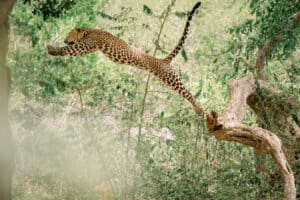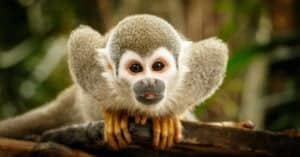Baby monkeys range from some of the tiniest and smartest mammals. There are many species of baby monkeys, and they all grow and live in their own specific ways. Here are five baby monkey facts that you probably didn’t know!
#1: Monkey Infants Spend Most of Their Time With Mom

Douc
Langur monkey mother and baby eating.
©nattanan726/Shutterstock.com
Monkey infants are often raised by their mothers, although some are also raised by their Dad as well. After baby monkeys are born, they like to catch a ride from their mom by hanging from her neck or getting comfortable on her back.
This means they spend a good portion of their time with her, and they learn many things from her along the way. Consequently, young monkeys tend to stay with their moms and learn as much as they can. Furthermore, they usually stay close to their mothers until they’re about a year and a half old.
#2: Monkey Babies Throw Tantrums
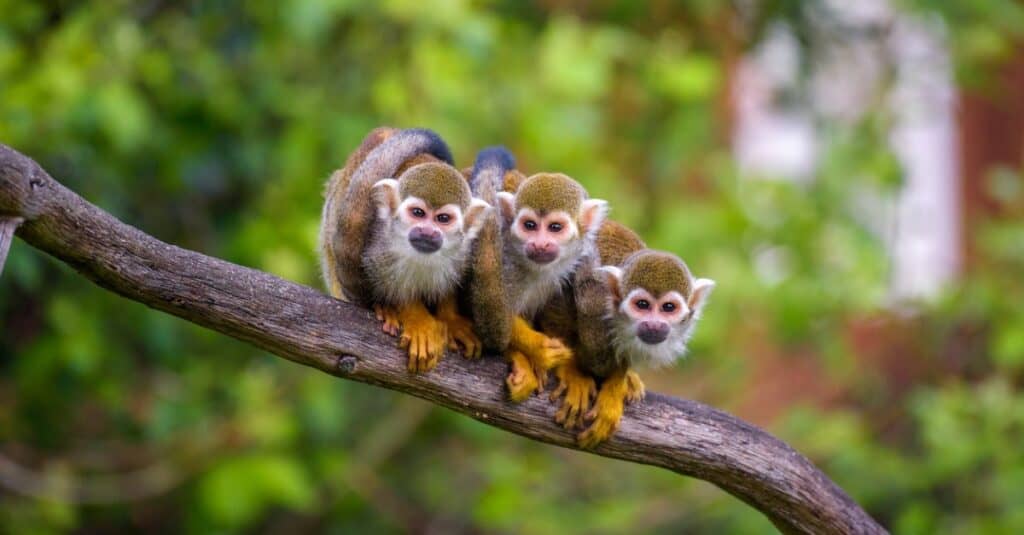
Monkey babies are known to throw tantrums to gain their mother’s attention.
©iStock.com/miroslav_1
Just like human babies, monkeys cannot fully communicate their wants and needs to their parents. This means that if a monkey is hungry, it will cry to let its mother know.
Sometimes, monkey babies will start to throw a tantrum to get their mother’s attention. However, these tantrums often lead to being punished by other family members, like being bitten or smacked. Moreover, this is usually the result of the mom not giving in to her baby’s wants.
#3: Newborn Monkeys Are Extremely Intelligent and Social Creatures
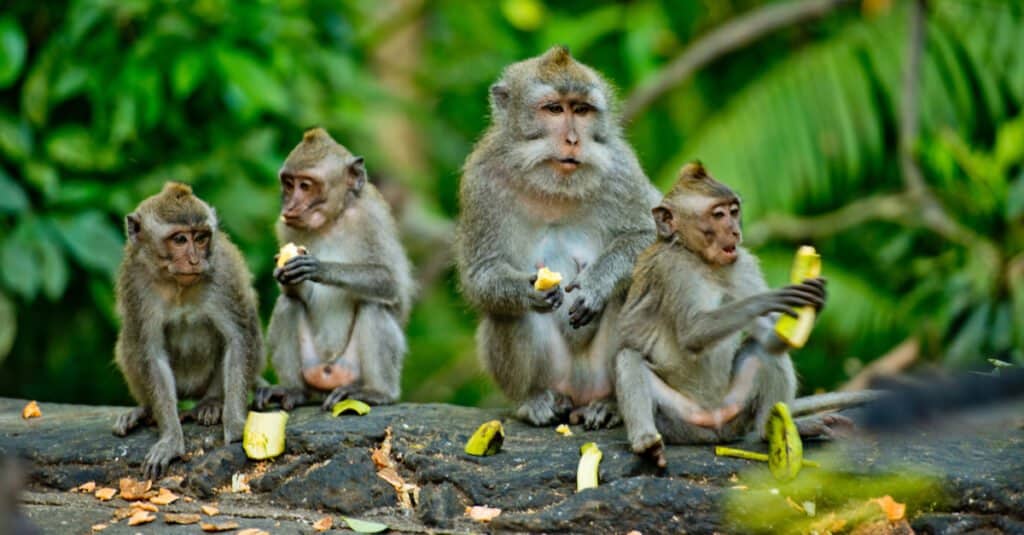
Young monkeys exist in a social network of monkeys that their parents create.
©Leo_nik/Shutterstock.com
From the time they’re born, monkeys are introduced to a social network of monkeys from their parents’ group. Hence, they’re taught to show affection from an early age by grooming, holding hands, cuddling up to one another, and even kissing!
Monkeys learn by observation, meaning monkey see, monkey do. Also, they’re known to make tools to help them acquire food, and sometimes they also use the tools they’ve made to impress their peers.
#4: Monkey Babies Can Recognize Their Family Members

Monkey babies can identify related family members in pictures.
©Korovko Gleb/Shutterstock.com
Studies have shown that even if a young monkey doesn’t know who his father is, they can still identify other monkeys related to them just by looking at pictures. They recognize familiar facial features instinctively to avoid inbreeding.
Some monkey species have unique mating habits that don’t allow them the privilege of always knowing exactly which monkey has fathered which. Besides, by being able to recognize familial features, it keeps the younger generation from inbreeding.
#5: Baby Monkeys Lose Their Baby Teeth Just like We Do
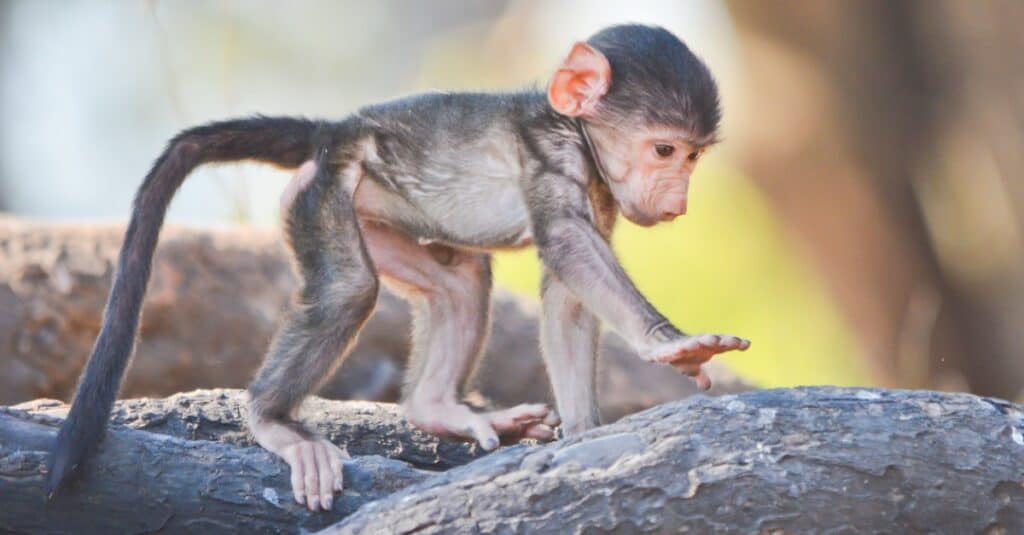
Monkeys lose their baby teeth just like humans!
©iStock.com/marcelauret
As it turns out, humans have quite a few things in common with monkeys. To be fair, we are both mammals. Monkeys are born without any teeth because, as mammals, they survive primarily on their mothers’ milk supply for the first few weeks of their lives. However, as they get older, they start to get teeth in sync with their naturally evolving diets.
Most monkeys are omnivores, which means they eat plant life and other small animals and insects. The older they get, the more variety they begin to have in their diets. Consequently, young adult monkeys lose their baby teeth and get more permanent adult teeth in. Their adult teeth allow them to eat their leaves and fruit well and the occasional frog they might feel in the mood for.
The photo featured at the top of this post is © iStock.com/marcelauret
FAQs (Frequently Asked Questions)
How much does a baby monkey weigh?
There are over 265 species of monkeys, and they come in all shapes and sizes. One of the smallest species of monkeys, the Pygmy Marmoset, weighs from 13-16 grams, while the largest species of monkey, the mandrill, has babies born anywhere from 453-907 grams.
What do baby monkeys eat?
Baby monkeys depend on their mothers for their meals. Monkeys are mammals, and mammals are nourished by milk their mother produces to feed them. Orangutans are nearly six years old when they stop nursing from their moms! Baby monkeys are introduced to more solid foods such as leaves and fruits from a young age but still primarily depend on their mother’s milk until they are around a year and a half old depending on each different species of monkey.
Where do baby monkeys live?
Most species of monkeys live in trees that can be found in tropical rainforests in parts of Central and South America, Asia, and Africa. Monkeys use their feet as an extra set of hands, making swinging around from limb to limb look effortless!
What are baby monkeys called?
Like human babies, baby monkeys are called infants. A group of monkeys would be called a tribe or a troop. Monkeys are very social mammals, always traveling in tribes and often leaving one tribe to join another.
Thank you for reading! Have some feedback for us? Contact the AZ Animals editorial team.





